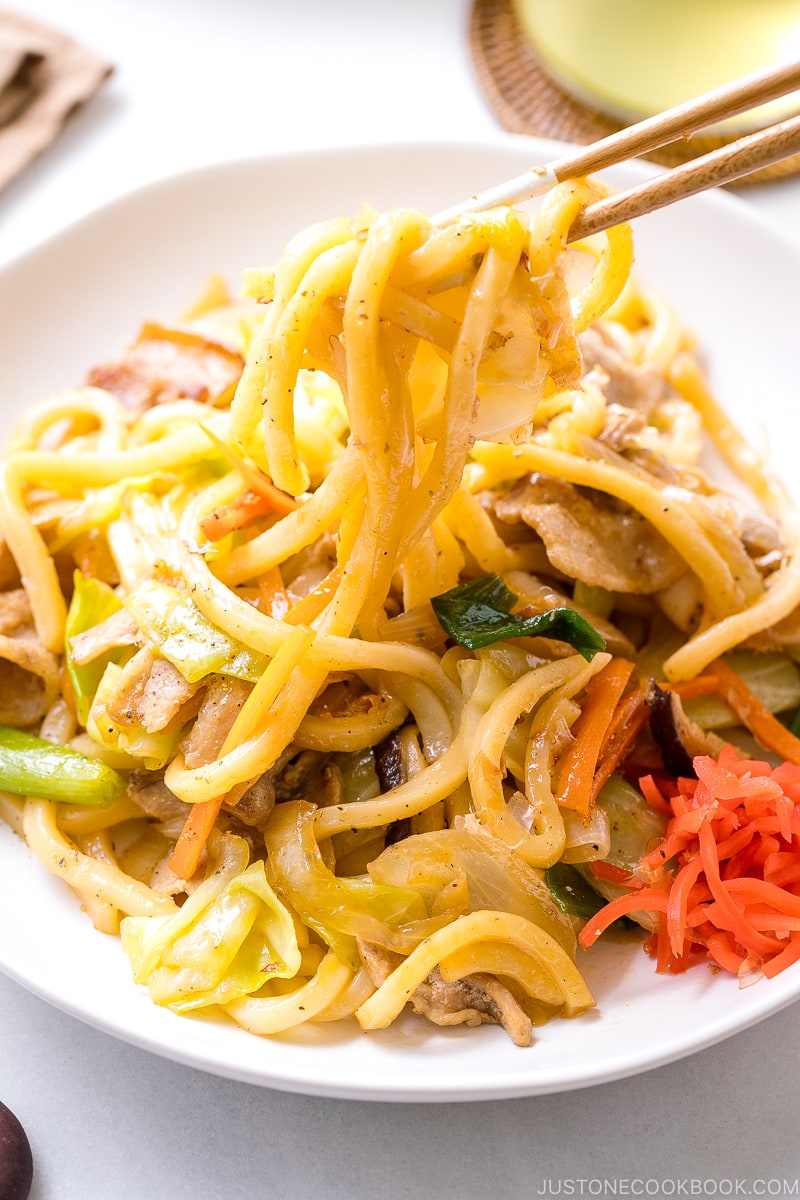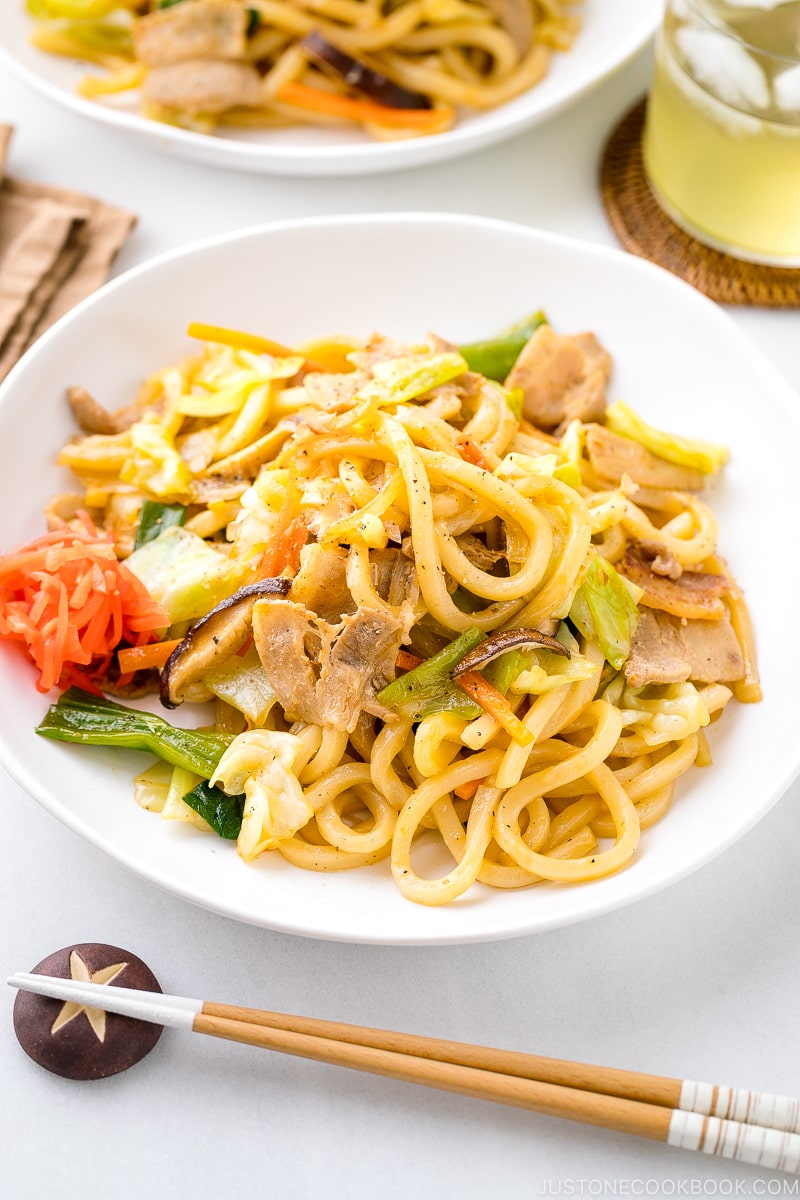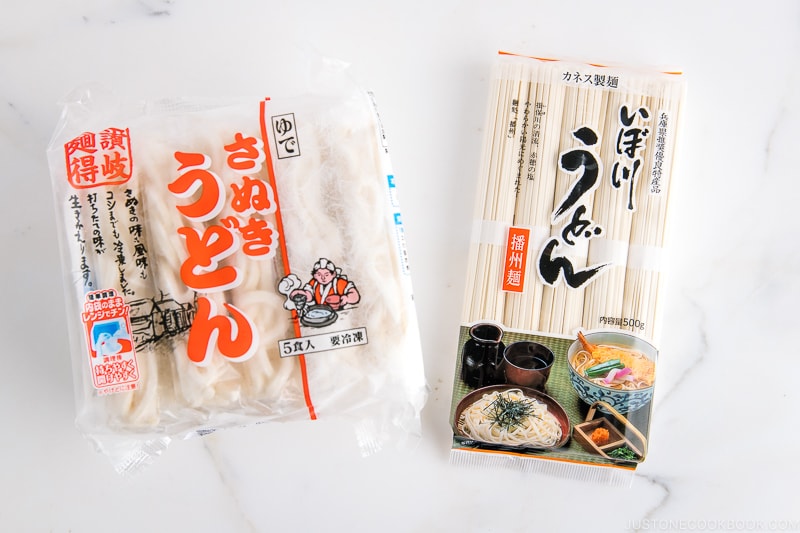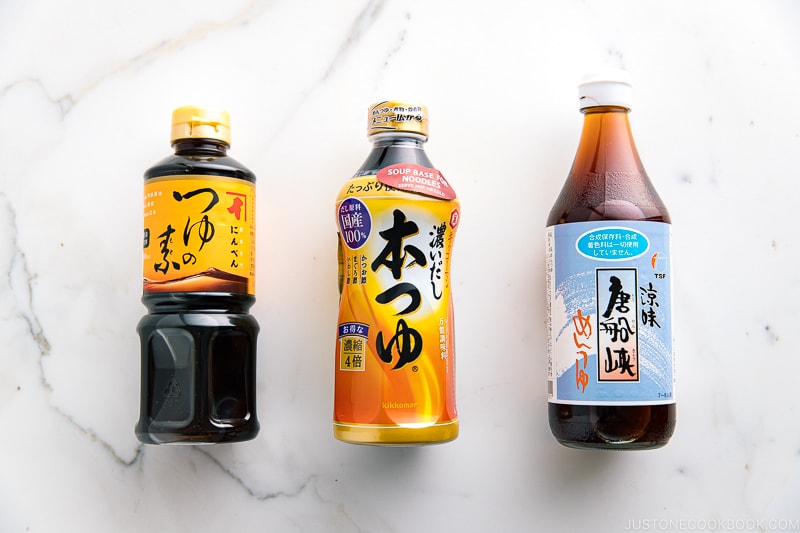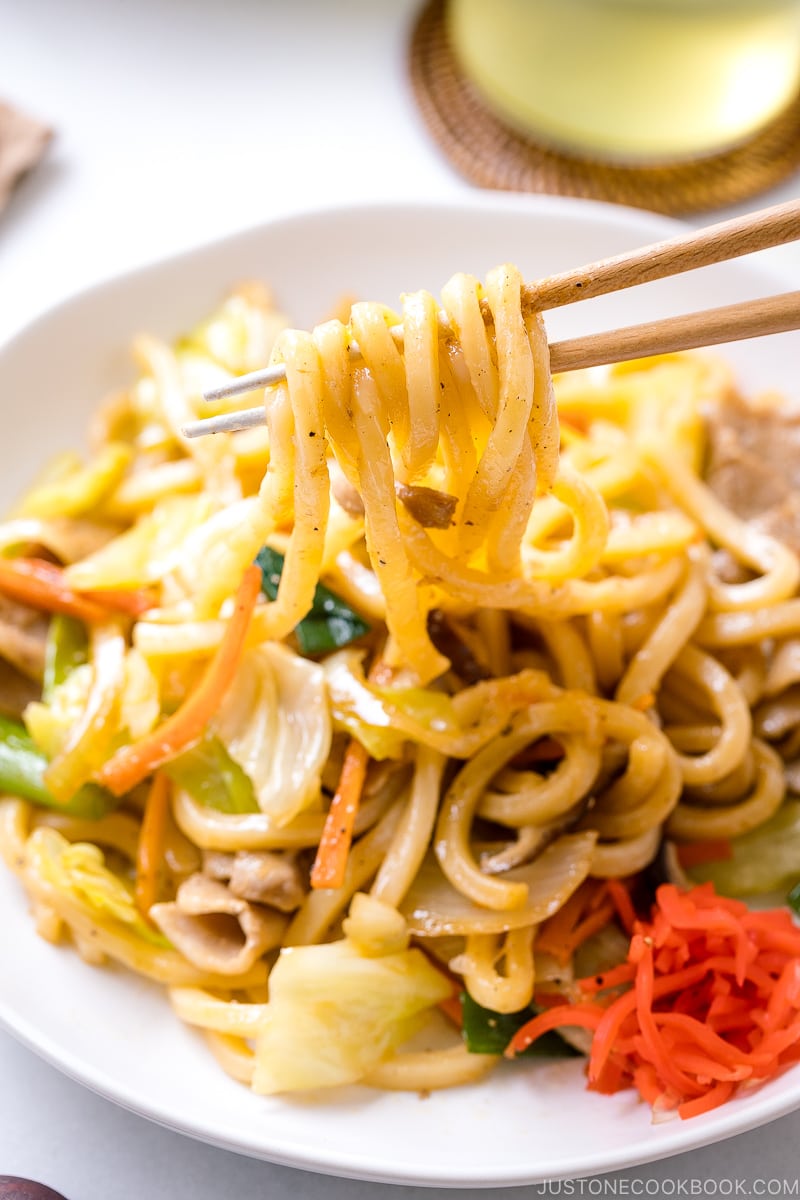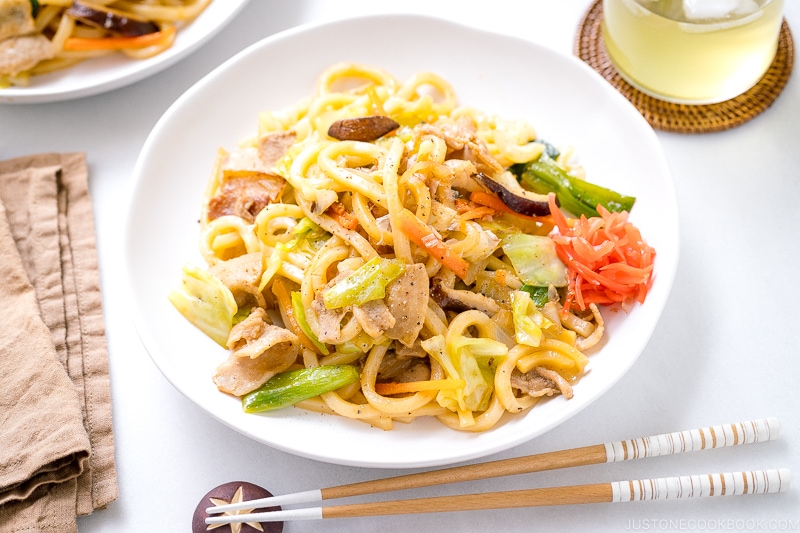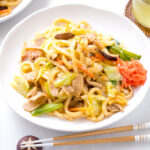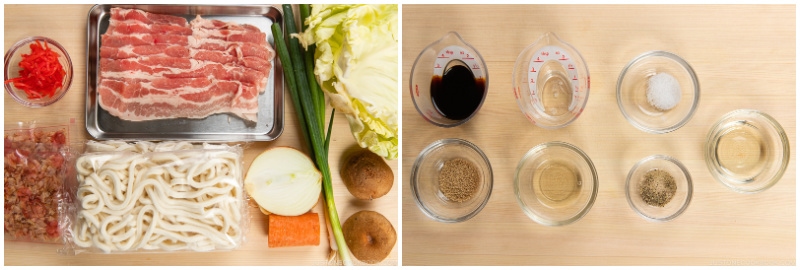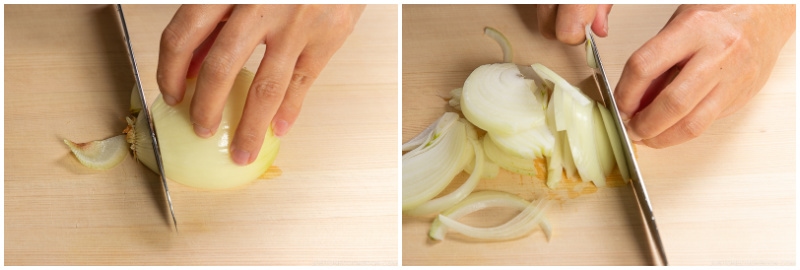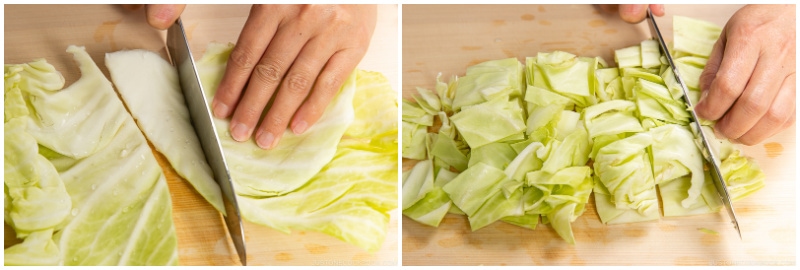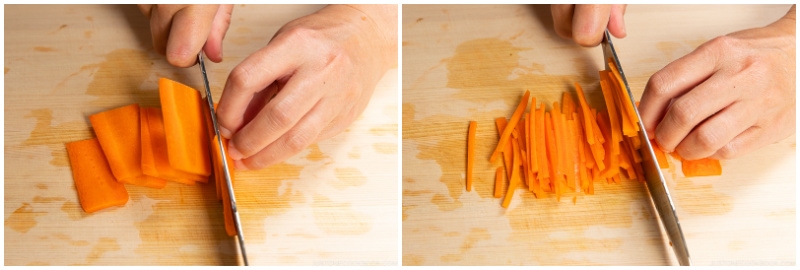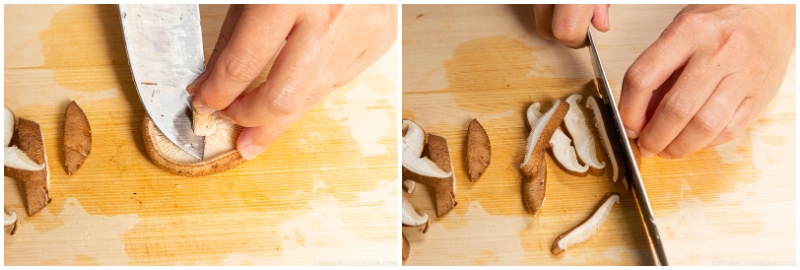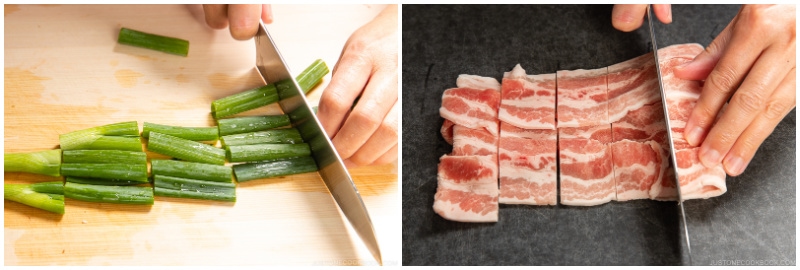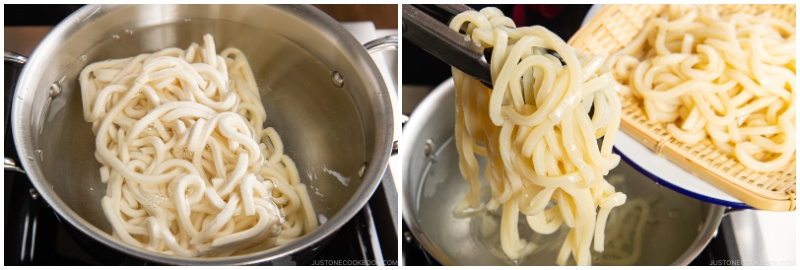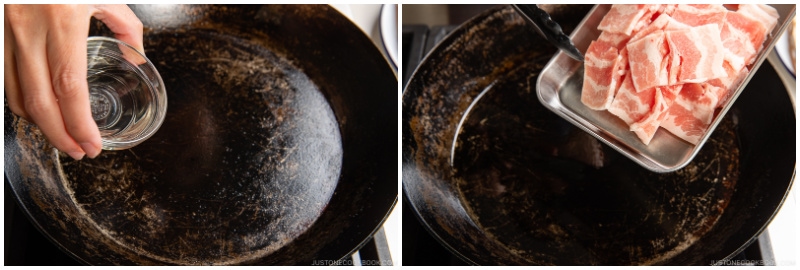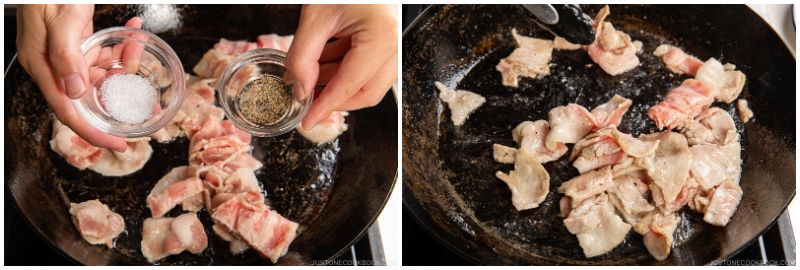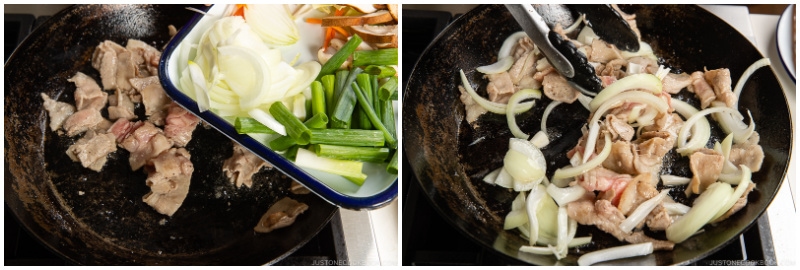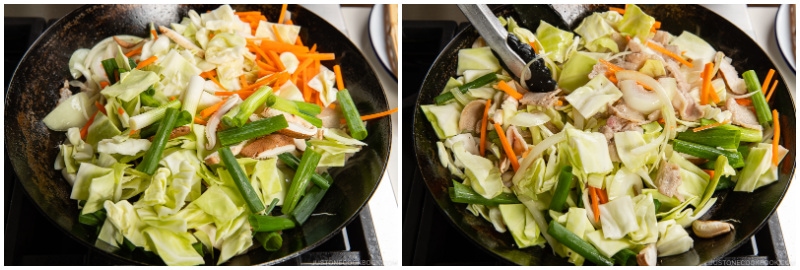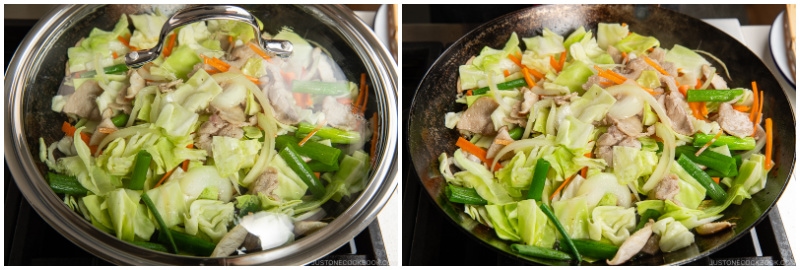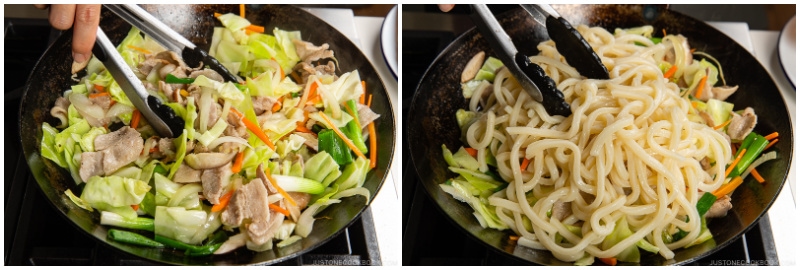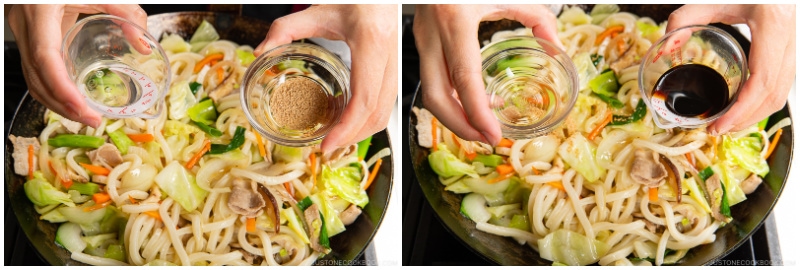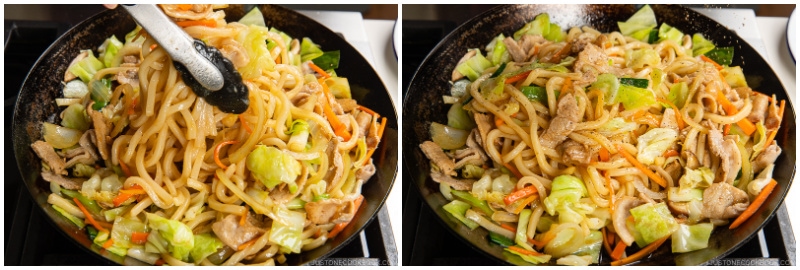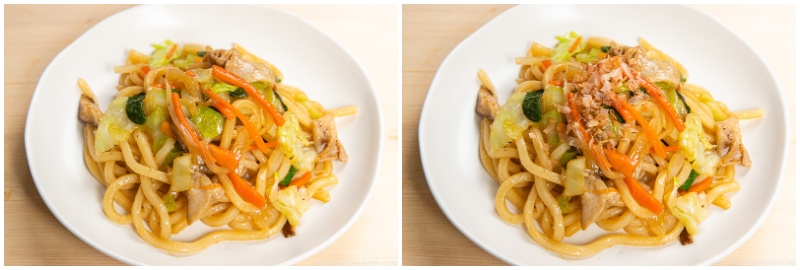Is there anything more pleasurable and comforting than a hot plate of noodles? For a year-round favorite, I always count on Yaki Udon (焼きうどん) as my go-to noodle dish. You have thick and chewy noodles, savory sauce, crisp vegetables, and slices of seared pork — what’s not to love?! It’s fast, easy, and packed with umami flavors. Forget take-out, and make authentic yaki udon at home instead!
What is Yaki Udon?
Yaki Udon (焼きうどん) is Japanese stir-fried udon noodles with meat/seafood and vegetables, flavored with a sweet and savory sauce. It’s a variation of another wildly popular Japanese stir-fried noodle dish called Yakisoba (焼きそば). Just like yakisoba, yaki udon is also synonymous with Japanese summertime festival food. It reminds me of energetic cooks at the yatai (屋台, mobile street food stall) with metal spatulas in their hands, working swiftly with a huge pile of thick fat noodles on a flat top grill. The steam wafting through the air and the enticing aroma luring you in.
Difference Between Yaki Udon and Yakisoba
Yaki Udon – Yaki udon always uses udon noodles. Udon noodles are thick and chewy white noodles made with wheat flour and water. Udon noodles are very versatile – in hot noodle soup like Kitsune Udon and Nabeyaki Udon, in cold noodle dishes like Tanuki Udon, and lastly, in stir-fried dishes like yaki udon. Yakisoba – Yakisoba uses chukamen (中華麺), yellowish Chinese-style noodles made with wheat flour and kansui (alkaline solution). These same noodles are used for Ramen and yakisoba.
Ingredients for Yaki Udon
You can pretty much use any protein and vegetables from the refrigerator to make this ultra comforting stir-fry noodle!
Protein: Pork is the typical choice of meat for a traditional yaki udon. I usually like to use thinly sliced pork belly for more flavors. That said, you can always use chicken, beef, or seafood such as shrimp and squid. For vegetarian options, you can just leave out the meat or use thinly sliced fried tofu (or tofu puffs). Vegetables: Use scraps of vegetables that you have in the fridge. Have some mushrooms on hand? Add them in! Udon Noodles: You can use frozen, fresh, or dry noodles to make yaki udon. I recommend using either fresh or frozen udon noodles because they have the best texture. Read more below. Sauce: For this recipe, I’ll give you two options. Both have a similar taste but are made with different condiments. I’ll discuss more of this below. Optional toppings: For extra oomph, I love topping the noodles with katsuobushi (shaved bonito flakes) and beni shoga (red pickled ginger). You can find them at Asian grocery stores.
How to Make the Best Yaki Udon
Best Choice of Udon Noodles
In the ideal world, fresh udon is always the best. I have a homemade fresh udon noodle recipe that you can make from scratch. However, we don’t always have the time to make udon from scratch. If you live close to a Japanese, Korean, or Chinese grocery store, I recommend buying frozen Sanuki Udon for all your udon noodle dishes. Sanuki udon is sold frozen in bricks, usually five bricks in a package. They have an elastic and chewy texture. All you need is to blanch the frozen noodles for one minute. If you can’t find Japanese brands, you can also use Korean frozen udon. Another option is dried udon noodles. These noodles are usually flat and the texture is less chewy, but they won’t break into pieces like refrigerated udon noodles. You could use instant udon noodle packs found at mainstream grocery stores (if it was your only option), but take note that they are more doughy in taste and tend to break easily.
How To Make Your Own Variation
To customize yaki udon with your own preferred protein, just sub the pork belly slices with the below ingredients and adjust the cooking time accordingly.
Ingredient Variations
Chicken Yaki Udon — use 6 oz (170 g) chicken pieces Beef Yaki Udon — use 6 oz (170 g) thinly sliced beef Shrimp Yaki Udon — use 6 oz (170 g) peeled and deveined shrimp Seafood Yaki Udon — use 6 oz (170 g) mixed seafood Tofu Yaki Udon — use 6 oz (170 g) sliced fried tofu Vegetable Yaki Udon — besides the vegetables we use, use an additional 1 cup of thinly sliced or chopped vegetables, such as bell peppers, broccoli, and shiitake mushrooms.
The Yaki Udon Sauce
There are typically 3 flavors for yaki udon recipes in Japan.
Soy sauce base Mentsuyu base – My go-to as it takes only 2 ingredients! “Sauce” base – Known as sauce or so-su (ソース) in Japan, this Japanese Worcestershire sauce is slightly sweeter than its original counterpart. It is commonly used in the Osaka area. Some people combine both the “sauce” and soy sauce.
The soy sauce-based seasoning uses 4 ingredients: soy sauce, sake, mirin, and dashi powder. All four ingredients are standard Japanese condiments. I don’t really use dashi powder in my recipes, but here, I use it as an umami booster and a salt substitute. The easiest and best udon sauce is made of only 2 ingredients: mentsuyu (concentrated noodle soup base) and soy sauce. I always keep a bottle of mentsuyu at home for quick soba or udon noodle soup. Note: I’ve seen some online recipes that call for sesame oil, dark soy sauce, and oyster sauce to make yaki udon sauce, but please note that we don’t use these ingredients in authentic yaki udon. Yaki udon in Japan is light in color and not dark-colored noodles. That would be more of a Chinese-style noodle dish. Mentsuyu (also called tsuyu) is made from umami-packed ingredients: sake, mirin, soy sauce, kombu, and katsuobushi (dried bonito flakes). The ingredients for mentsuyu are very similar to my yaki udon seasoning A. Instead of four ingredients, you just need mentsuyu and a little bit of soy sauce. The sauce comes in convenient bottles (pictured above). However, the store-bought mentsuyu in a bottle is not vegan-friendly. You can also make your own mentsuyu or use the soy sauce-based seasonings above.
Yaki Udon Cooking Tips
Yaki Udon is a quick and easy home cooked dish to make for your family or for yourself. You’ll need only standard ingredients you probably already have in the fridge.
Tip #1: Keep udon noodles in your pantry.
Always have frozen or dried udon noodle packages in your pantry. Then, you can make delicious yet simple udon noodle dishes instead of getting a take-out or eating out. My daughter loves udon noodles so I always keep some in my freezer for a quick meal.
Tip #2: Don’t overcook the udon noodles.
Since you will be cooking the udon with the rest of the ingredients in the frying pan, you don’t need to cook the noodles until they turn soft. Overcooking will only affect the final outcome of the texture.
Tip #3: Cover and steam the veggies.
Cover the frying pan to steam the veggies instead of stir-frying constantly. Do make sure to reduce the stove’s heat to low. With the moisture in the vegetables, all the bulky veggies will get steamed and become tender fast. If you don’t have a lid that fits your frying pan, you can continue to stir-fry the ingredients.
Tip #4: Use a pair of tongs.
If you don’t have one in the kitchen, get this pair. You won’t regret the purchase. It’s so much easier to mix the noodles and other ingredients with a pair of tongs than trying to use a pair of chopsticks or a spatula or two. Trust me on this!
Tip #5: Use a large frying pan.
Lastly, I recommend using the biggest frying pan you have. Stir-frying requires more surface area, and it’s a big plus to have taller sides so the food stays in the pan.
Popular Udon & Other Noodle Recipes You’ll Love
Curry Udon Vegetarian Udon Kitsune Udon Udon Noodle Soup (Kake Udon) Vegetarian Ramen
Wish to learn more about Japanese cooking? Sign up for our free newsletter to receive cooking tips & recipe updates! And stay in touch with me on Facebook, Pinterest, YouTube, and Instagram. Editor’s Note: This post was originally published in January 2011. It was republished with a new video, revised recipe, and updated content on May 2, 2022.

